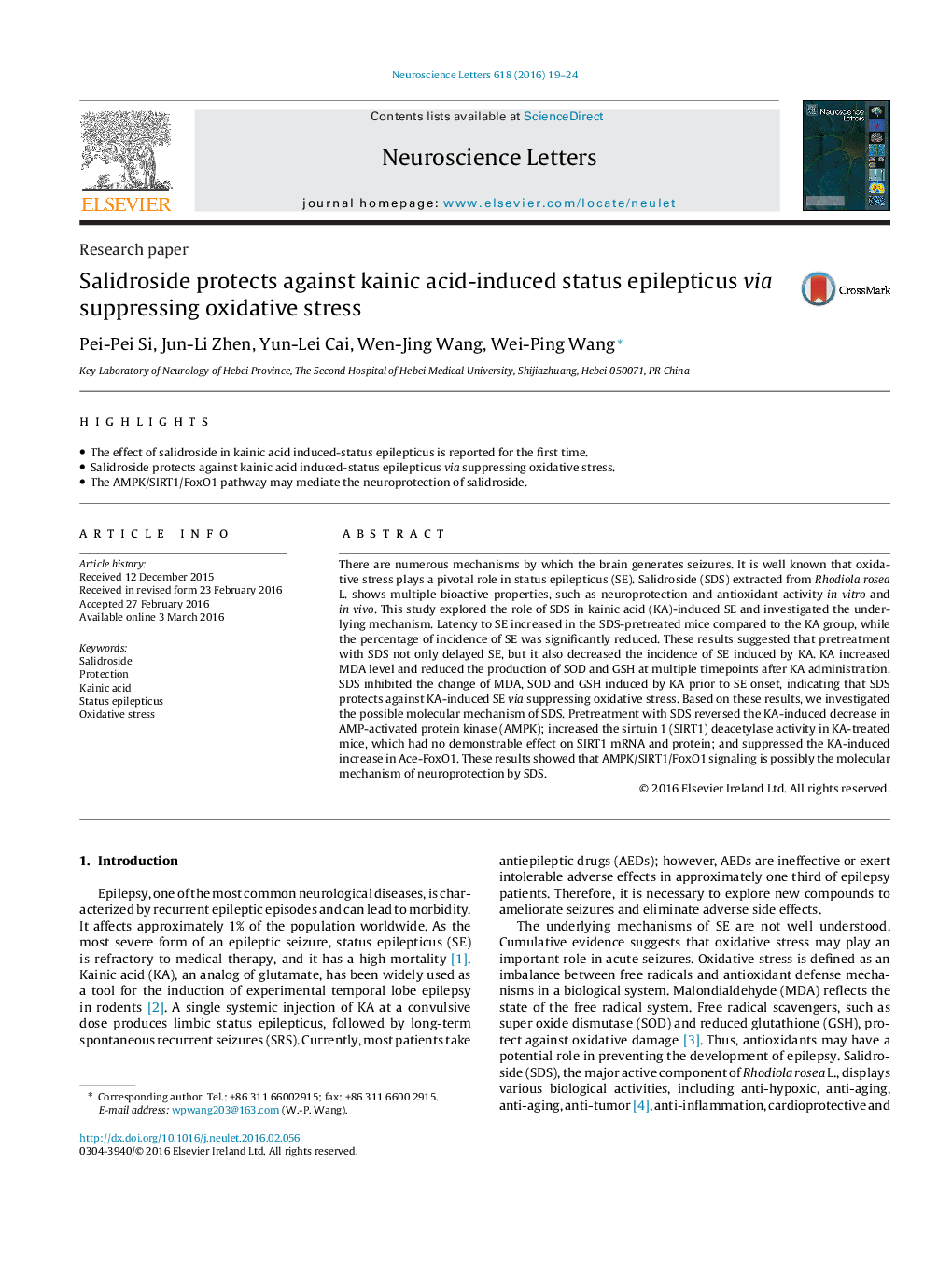| Article ID | Journal | Published Year | Pages | File Type |
|---|---|---|---|---|
| 6279641 | Neuroscience Letters | 2016 | 6 Pages |
Abstract
There are numerous mechanisms by which the brain generates seizures. It is well known that oxidative stress plays a pivotal role in status epilepticus (SE). Salidroside (SDS) extracted from Rhodiola rosea L. shows multiple bioactive properties, such as neuroprotection and antioxidant activity in vitro and in vivo. This study explored the role of SDS in kainic acid (KA)-induced SE and investigated the underlying mechanism. Latency to SE increased in the SDS-pretreated mice compared to the KA group, while the percentage of incidence of SE was significantly reduced. These results suggested that pretreatment with SDS not only delayed SE, but it also decreased the incidence of SE induced by KA. KA increased MDA level and reduced the production of SOD and GSH at multiple timepoints after KA administration. SDS inhibited the change of MDA, SOD and GSH induced by KA prior to SE onset, indicating that SDS protects against KA-induced SE via suppressing oxidative stress. Based on these results, we investigated the possible molecular mechanism of SDS. Pretreatment with SDS reversed the KA-induced decrease in AMP-activated protein kinase (AMPK); increased the sirtuin 1 (SIRT1) deacetylase activity in KA-treated mice, which had no demonstrable effect on SIRT1 mRNA and protein; and suppressed the KA-induced increase in Ace-FoxO1. These results showed that AMPK/SIRT1/FoxO1 signaling is possibly the molecular mechanism of neuroprotection by SDS.
Related Topics
Life Sciences
Neuroscience
Neuroscience (General)
Authors
Pei-Pei Si, Jun-Li Zhen, Yun-Lei Cai, Wen-Jing Wang, Wei-Ping Wang,
